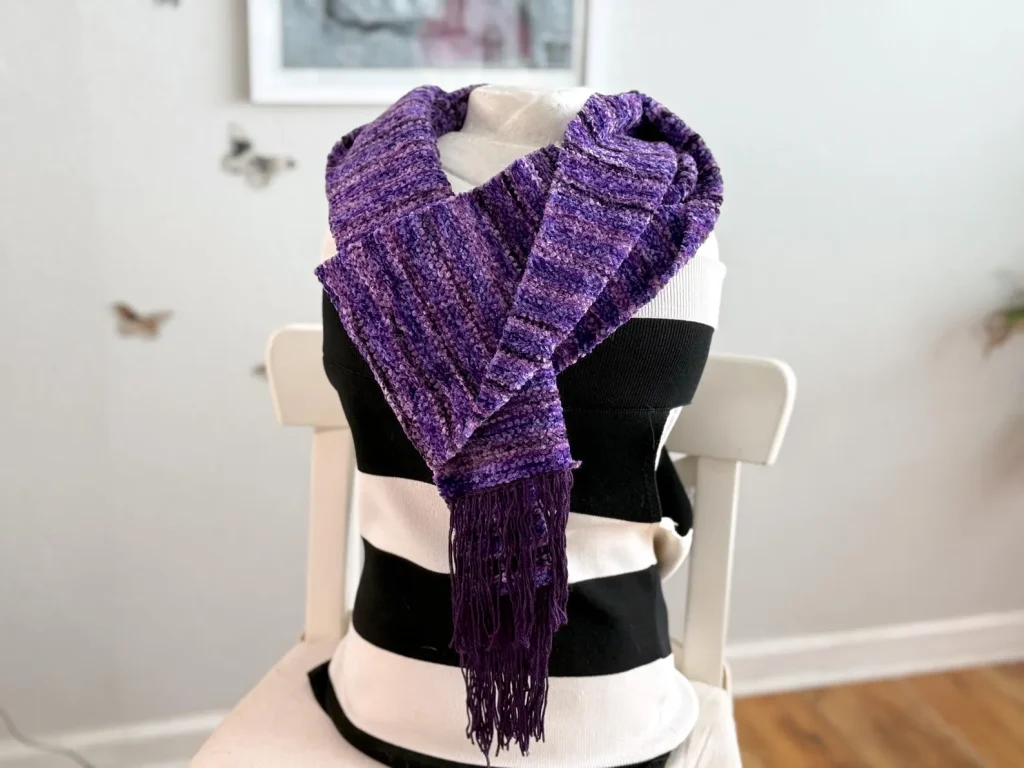News
The Role of Technology in Handwoven Scarves
While handwoven scarves are often seen as a symbol of traditional craftsmanship, technology has also played a significant role in their evolution. The rise of digital tools and advanced looms has provided artisans with new ways to push the boundaries of their craft while still maintaining the quality and artistry that define handwoven products.
Digital Design Tools: Many modern artisans use digital design software to plan intricate patterns and color combinations before starting the weaving process. This allows for more precise and complex designs that were once difficult to achieve with manual techniques alone. These tools help artisans experiment with color, texture, and structure, providing more opportunities to create innovative designs without sacrificing the handwoven quality of the final product.
Advanced Looms: While traditional hand looms remain popular, the use of computer-controlled looms has become more common in recent years. These looms still require a skilled artisan to oversee the process, but they can automate certain aspects of weaving, increasing efficiency while still ensuring that the end result maintains the quality and craftsmanship of handwoven items. The combination of traditional and modern techniques has allowed artisans to experiment with new designs while retaining the authenticity of handwoven scarves.
Online Platforms for Artisans: The growth of online marketplaces like Etsy, Instagram, and Pinterest has given artisans a platform to showcase their work to a global audience. These platforms allow consumers to connect directly with artisans, offering them the opportunity to purchase handwoven scarves from anywhere in the world. Social media also allows for more transparency in the production process, giving buyers insight into the craftsmanship and materials used, and reinforcing the value of supporting local artisans.
Sustainability Through Innovation: As sustainability becomes more important to consumers, artisans are increasingly exploring ways to use recycled fibers and eco-friendly dyes in their handwoven scarves. For example, some artisans are incorporating upcycled cotton or recycled polyester in their weaving, reducing the environmental impact of their production. The use of plant-based dyes and natural fibers ensures that handwoven scarves remain a sustainable fashion choice.
How to Style Handwoven Scarves
One of the best things about handwoven scarves is their versatility. They can be styled in countless ways, making them a must-have accessory for any wardrobe. Whether you’re dressing up for a special occasion or keeping warm on a cold day, there are endless ways to wear these beautiful pieces.
The Classic Neck Wrap: The most common way to wear a handwoven scarf is simply to drape it around your neck. Whether you tie it once or wrap it multiple times, this classic look adds a touch of elegance to any outfit. A long handwoven scarf can easily be styled to suit both casual and formal wear, depending on how it’s draped.
As a Shawl or Wrap: For cooler evenings, a handwoven scarf can double as a shawl or wrap. Drape it over your shoulders for a sophisticated, cozy look. This style is perfect for special occasions, adding an extra layer of warmth and style to evening wear.
As Headwear: A popular trend is to wear scarves as headbands or head coverings, which not only add a boho-chic touch to any outfit but also provide extra protection against the sun or cold. You can wrap a handwoven scarf around your head for a stylish and practical accessory.
The Belted Scarf: Another modern way to wear a handwoven scarf is as a belt. Simply fold it lengthwise and loop it through your belt loops for a unique and fashion-forward look. This style is particularly popular with high-waisted jeans or skirts, adding texture and a pop of color to your outfit.
The Bun Wrap: For a casual yet chic style, wrap your handwoven scarf around a bun or ponytail. This adds a playful touch and works especially well with scarves made from cotton or wool, as they hold their shape well. This look is ideal for adding a pop of color and pattern to a simple hairstyle.
The Waist Scarf: During the summer months, handwoven scarves can also be worn around the waist as a sarong or wrap skirt. This look is perfect for the beach, poolside, or hot weather, providing comfort and a burst of color without sacrificing style.
The Future of Handwoven Scarves
The future of handwoven scarves is bright, with continued innovation, sustainability, and fashion-forward designs on the horizon. As the slow fashion movement gains momentum, more consumers are turning to artisanal, handwoven products that are made with care and attention to detail. Here’s what we can expect for the future of handwoven scarves:
Increased Demand for Sustainable Materials: As awareness of the environmental impact of the fashion industry grows, there will likely be a continued push towards using more sustainable, eco-friendly materials in handwoven scarves. From plant-based fibers like hemp and bamboo to organic cotton and recycled yarns, sustainability will remain a key focus for artisans.
Hybrid Materials: We can expect to see more experimentation with hybrid materials in handwoven scarves, where artisans blend traditional fibers with modern, innovative materials. For example, scarves made from a blend of recycled polyester and organic cotton could become more common as part of a broader effort to create more sustainable fashion.
Global Influence on Design: With global connectivity, artisans from various parts of the world are now able to share techniques, materials, and designs with one another. This exchange of ideas will lead to more diverse designs and a fusion of different weaving traditions, making handwoven scarves even more eclectic and multicultural in design.
Smart Scarves: As technology continues to infiltrate fashion, we may see the rise of smart scarves that incorporate elements like solar-powered charging, temperature regulation, or built-in LEDs for lighting. These innovations could change how we wear scarves, making them not only a fashion accessory but also a functional piece of wearable technology.
More Accessibility: As the global market for handwoven scarves continues to expand, consumers will have more access to high-quality scarves at different price points. Online platforms like Etsy and Instagram will continue to provide a marketplace for artisans to reach global customers, offering a range of products from high-end luxury scarves to affordable, handmade options.
Conclusion
Handwoven scarves are more than just a piece of clothing; they represent a connection to traditional craftsmanship, sustainability, and creativity. As fashion moves away from the fast-fashion model, the value of handwoven scarves has only increased. Their timeless appeal, coupled with the rising demand for sustainable fashion, ensures that these accessories will continue to be cherished for years to come.
Whether you’re drawn to the luxurious feel of handwoven wool, the delicate sheen of silk, or the earthy warmth of bamboo, there’s a handwoven scarf out there for everyone. And with so many designs, materials, and ways to wear them, these scarves remain an indispensable accessory for any wardrobe. Whether you’re supporting artisans, embracing eco-conscious fashion, or simply looking to add a unique touch to your outfits, a handwoven scarf is the perfect choice.

